In this article:
- We may be living in a post-App world
- Mobile shopping is the norm
- Sinch’s research shows consumers are more likely to leave email messages unread than mobile messages, with 40% of consumers admitting they have at least 50 unread emails in their inbox — and nearly 1 in 10 admitting to over 1,000. But unread mobile messages are much less common, with only 4% saying they have 50 or more unread mobile messages.
Throughout human history, few things have remained constant. Two of those things are 1) Our inherent need to communicate and build relationships, and 2) Our need to trade with each other to improve our quality of life. How we do those things has constantly evolved through necessity leading to invention. Yet each person's needs are different and can vary greatly based on unique personalities, economic status or physical location.
One needs only to review Maslow's hierarchy of needs to see where they may fall on the pyramid at any one time.
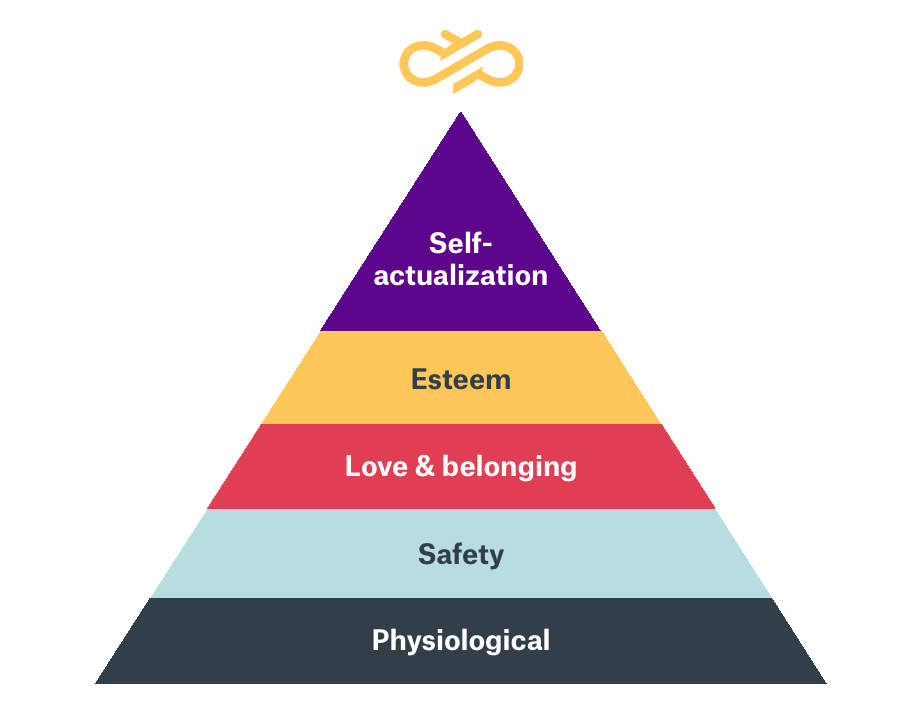
As a widely accepted economic fact, every rational person looks to get the greatest value out of every interaction and exchange they make (Adam Smith: The Wealth of Nations, dates back to 1776 and is still one of the most influential works credited with giving birth to modern free-market economics). This is why in a hyperconnected world where businesses look to cut through the noise to deliver valuable products and services, personalization and customer experience have become a significantly growing area for major enterprise budgets. Companies are listening, and they are investing in customer loyalty, retention and growth at an increasing rate. For example, WBR recently found that:
an overwhelming 63% of marketers and eCommerce leaders affirmed personalization as a top priority within their current technology initiatives. Personalization was followed in importance by the ability to effectively reach customers through multiple channels (47%), making strategic data-driven decisions through the use of analytics (45%), and improving overall data quality (40%)
Leading into 2020, the world is in a state of flux. Technology improvements over the last century alone have far outpaced all of human history prior. The iPhone was released on June 29, 2007 - 12.5 years ago (or to put it in perspective, just over 4,500 days ago - as I write this at the end of December 2019). This striking invention, perhaps the greatest consolidation of all the greatest technology and information known to us in the palm of our hands, has already significantly reshaped our society, our world, and everything we now consider normal in our every day lives. Today, we need only open up a Google Search, ask Alexa, or set location-based automation on our smart devices to get what we want, when we want and how we want it. We live in a paradise where we have access to almost anything we want and any time we want with a few taps of our phone's screen. What an age we live in. 📱 👩🏾🚀 🚀 🛰️
In the same light, businesses now have access to us any time and anywhere we are as we drive demand for their products, services, and content via our mobile devices. Many deliver these through apps, yet branded app download rates are falling. Even two years ago in 2017, app discovery was already on the decline. We may be living in a post-App world very soon as more than half of smartphone users (51%) said they downloaded zero apps in a typical month (Source: TechCrunch), and a study by Silicon Valley analyst Andrew Chen showed the average app loses 77% of users within three days of being installed and just 5% are still using it at the 90-day mark (Source: Android Authority & @AndrewChen).
We may be living in a post-App world
Mobile shopping is the norm
Ecommerce has made my life so much better and so much easier. Should I have some unmet need, I'm likely to search through my phone for notifications, review the 200+ save for later items in my Amazon cart, or type a search into my email inbox. If I can't find what I'm looking for, there is always Google, or I can phone a friend ("Regis, I'd like to phone a friend" ☎️). I don't like going to the mall, and if I do, I go for a very specific reason and get in and out as soon as I can. Is this the reality for millions of Americans and Canadians alike? Perhaps I'm thinking too small, and this is becoming a global phenomenon?
I live only a 2+ hour drive North of Amazon's global HQ located in Seattle, Washington. As a result, their influence here in Vancouver is large, and the convenience is unmatched. Why would I spend time and money going to a store or mall when I can have things meet me at my door? The quick cost-benefit analysis in my head is all I need to reach down for my mobile phone and search for what I need and get it when I need it.
Despite working to solve my unmet needs and improve my quality of life through strategic and well-researched online shopping, many of my purchases are spontaneous and unplanned. I can thank the Instagram newsfeed for helping me discover cool new products I never knew I needed and then search Amazon to find the best quality, highest rated and best cost option that is also Prime in case I need to return it. I spend a lot of time on airplanes, so that last purchase of another bag to carry my stuff more conveniently was totally worth it! Yet, I didn't even know of its existence 2 days before I received it, let alone know I had an unmet need I hadn't even discovered yet. Does this sound like a familiar story to you?
While searching out what we need, people tend to find brands, styles, and products that align well with their unique sense of self. That makes them come back for more and want to remain connected. Therefore, we become loyal shoppers, sign up for marketing emails and mobile messages, look for deals, and prepare for their annual and seasonal sales. In essence, we open the door to interact with a particular brand or service that is improving the quality of our life in some way that makes sense to us. Getting to interact in the most convenient way possible can also be part of that value I am getting. If it's easy to buy from you, easy to interact with you, and you already add value that allows you to pass through my personal filter, then having a convenient means of interaction becomes a big part of that story.
Consumers want the ability to message businesses. A survey by Facebook found that 53% of people who message companies said they were more likely to shop with a brand they could reach through a messaging app (Source: Facebook Business, facebook IQ).
Similarly, consumers do not yet impose the same degree of filtering on messaging as they apply to other channels.
Sinch’s research shows consumers are more likely to leave email messages unread than mobile messages, with 40% of consumers admitting they have at least 50 unread emails in their inbox — and nearly 1 in 10 admitting to over 1,000. But unread mobile messages are much less common, with only 4% saying they have 50 or more unread mobile messages.
Source: Sinch - Mobile Consumer Engagement 2020
The times have changed since we all got our first smartphone (BlackBerry anyone? 🤙) and can do a lot more than just text and email on it. People like to receive your marketing emails if they've signed up for them, but they rarely ever read them. My personal opinion is that Emails are great for long-form communication, including promotions, lists, letters, and long-term engagements.
According to Statista, the number of emails sent daily is projected to reach 320 billion by 2021 (Source: Statista), and the average office worker receives 121 emails each day. This inundation leads consumers to find ways to filter, block and ignore emails — even emails they’ve subscribed to.
Sinch’s research found 40% of Millennials and Generation Z consumers maintain a special email address just for spam emails (Source: Sinch - Mobile Consumer Engagement 2020). Unfortunately, I never got the memo on the special email address, and my inbox has become a search engine for deals and things that I've signed up for over the years (over 155k unread emails and counting!). Yet, I hardly (if ever) go back to old messages because there are so many new ones. This has led to ignoring emails I receive from brands I love due to the sheer inability to have time to open and read them all, yet only wish to interact with when it makes sense for me. In essence, only when they are relevant to me.
It's hard to build customer loyalty in 2020
We used to live in a world with big brands and logos on our clothing because that's what we valued (remember the 90's? 🥳). Today the mindset has shifted, especially as Millennials and now Gen Z influence the marketplace more and more.
A recent podcast I was listening to (WSJ: Your Money Briefing - Nov 27, 2019: Holiday Shopping and the Generational Divide) talked about how Millennials are very cautious and well-researched with their purchases around Black Friday and Cyber Monday. Unlike previous years, this new generation of shoppers are not just looking for the best deals and things on sale, but considering the true quality, utility and especially the environmental impact of their purchases. These findings signal a true shift in the mindset of consumers, and how businesses need to adjust their approach to the changing demands of consumers who vote with their dollar.
On a similar thread, CNBC recently reported how Coca-Cola is releasing sparkling water with a jolt of caffeine (Source: CNBC). Why is that the case?
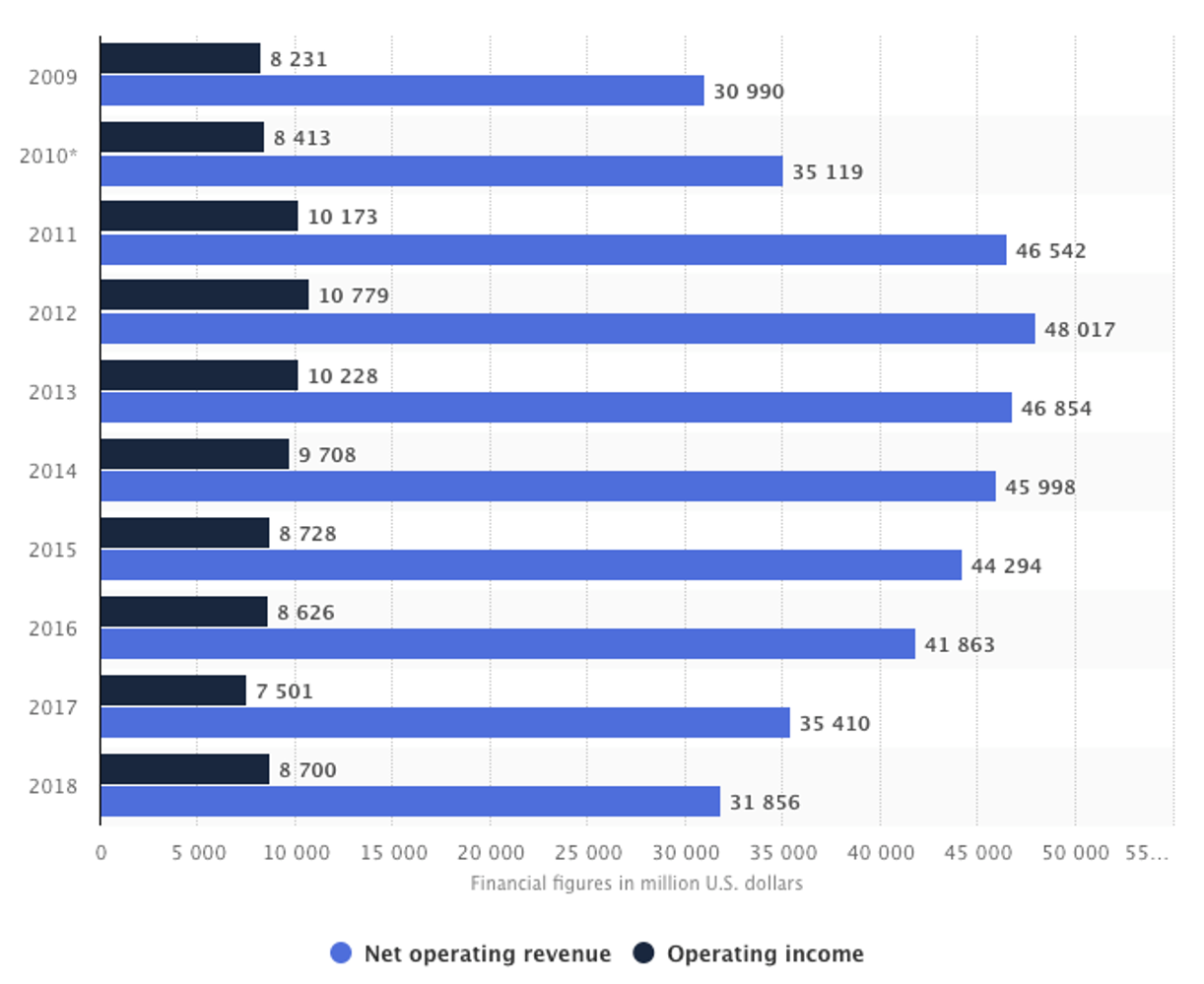
According to Statista, sales of Coca-Cola over the period 2012-2018 have been on a rapid decline (See graphic above Source: Statista). Consumers have become more aware of the consequences to their health, and a new category of Flavored and Functional Beverages is having a growth spurt with a nearly inverted graph. According to MarketWatch, the Flavored and Functional CPG market segment is projected to reach US$ 70.32 Billion by 2025, exhibiting a CAGR of 11.98% over that same period. As a result, even a goliath like Coca-Cola needs to pivot given mounting consumer shifts in behavior leading to new demands of the marketplace.
Looking at brand loyalty and customer experiences go hand in hand. Interactions with businesses have become a part of our daily lives and brands have personalities that create consumer expectations. These expectations can be both good and bad depending on the experience your customers have interacting with you. For example, should I continue to have a poor experience ordering from DoorDash, I can easily just order on Uber Eats and vice versa. Leading into 2020, advances in mobile communications and conversational messaging continue to multiply, giving businesses an unprecedented opportunity to engage with consumers at any time and any place.
Sinch did a study of over 2,000 global consumers and compared notes with leading experts at companies like Adobe, Uber, and Cisco. The Senior Marketing Automation Lead for Adobe highlighted the following:
Mobile is a private channel — much more private than an email in your inbox — and the reason we use this channel selectively at Adobe. We are very conscious that we do not want our customers to feel we are invading their space, from a loyalty as well as brand perception perspective.
On a similar thread, Gartner published a report recently stating "Conversational marketing will be a recognized channel of B2B and B2C customer engagement and revenue by 2020, displacing a combination of marketing, sales and service activities".
They go on to describe that "conversational marketing includes the use of persistent, stateful, cross-channel dialogues, in conversational style, to improve customer and business metrics across the Buy/Own/Advocate journey. By adopting some of the style and channels of consumer-to-consumer messaging, conversational marketing strategies can humanize their interactions with consumers."
Welcome to 2020
Going into 2020, conversational marketing and customer service applications have become the norm. More businesses than ever are experiencing this shift, driven by a combination of customer demands, access to technology and big disruptors in many key industries showing a better way to interact with and meet the needs of their customers. To understand customer adoption, and look at the trends across the globe, Sinch inquired to our focus group some questions to see where the opportunity may lie:
- Have you communicated with a business using interactive chat?
- Which of these messaging services do you use on your phone?
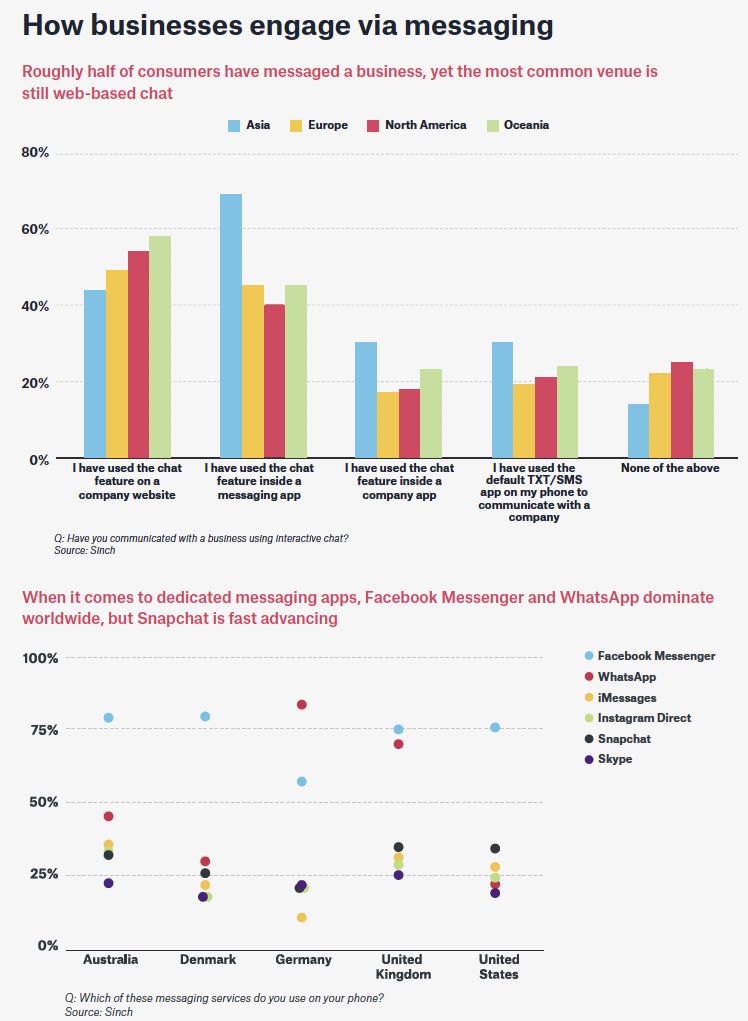
Source: Sinch - Mobile Consumer Engagement 2020
Now, working in the mobile messaging industry and consulting with companies who want to achieve the benefits a conversational marketing program offers reveals a lot of challenges of getting from here to there. We learned from the Senior CRM Channel Manager at Shell, Pierluigi Bosco who told us:
With all the data available about consumers’ online and transactional behavior, marketers tend to cluster customers into segments. The reality is that everyone is different and customers expect to be treated as unique. The challenge and the beauty of today’s marketing and CRM is to make sure we treat every customer individually rather than as part of a bucket of people. We need to create experiences, communications and offers based on individuals.
So what do consumers want? Why should businesses invest in this future?
Well, beyond keeping up with your competition who will crush you if you stick to the old way of doing things, consumers have actually told us they find mobile messaging to be useful and add value to their experience. Take the following results Sinch gleaned from our research as an example:
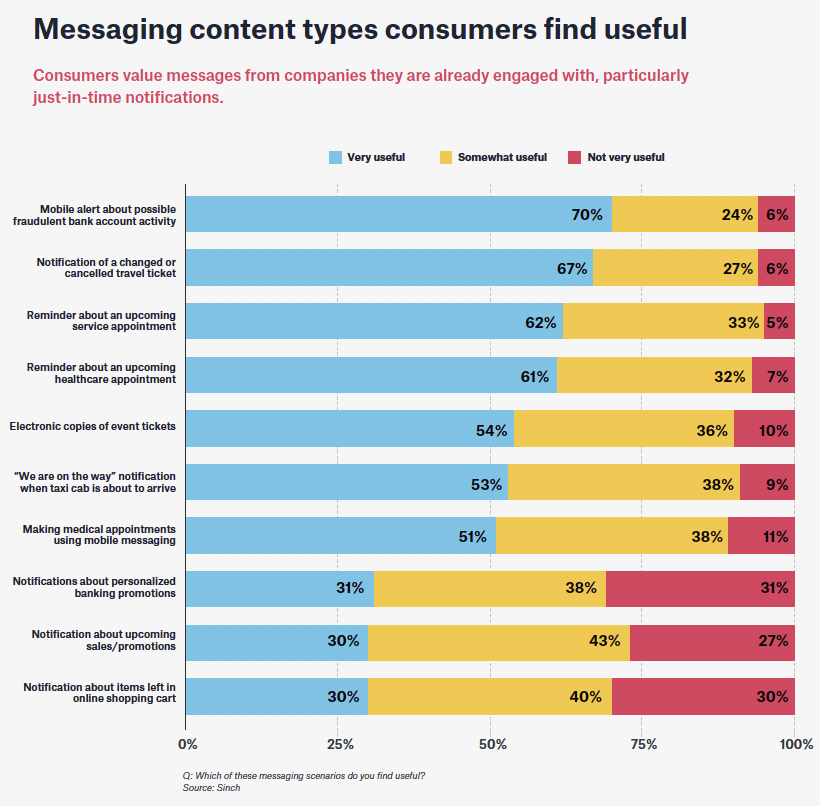
When we compare what consumers are currently able to do with what they would actually like to do when interacting with companies via their mobile devices, the data shows companies are missing critical opportunities. For example, 70% of banking customers say they would find a mobile alert about possible fraudulent activity related to their accounts “very useful,” but only 35% currently receive these. Similarly, consumers find getting a message about changes in travel reservations useful, but just 40% of those surveyed receive these messages.
The gap between what consumers want versus what businesses offer is the smallest in promotional messaging, meaning consumers aren’t yet agitating for more promotional messages beyond what they receive already. There are no surprises there. 🙊
Going beyond this, relevancy is absolutely key to making these interactions valuable to consumers. How mobile engagement behaves in 2020 hints at what it will look like in 2030.
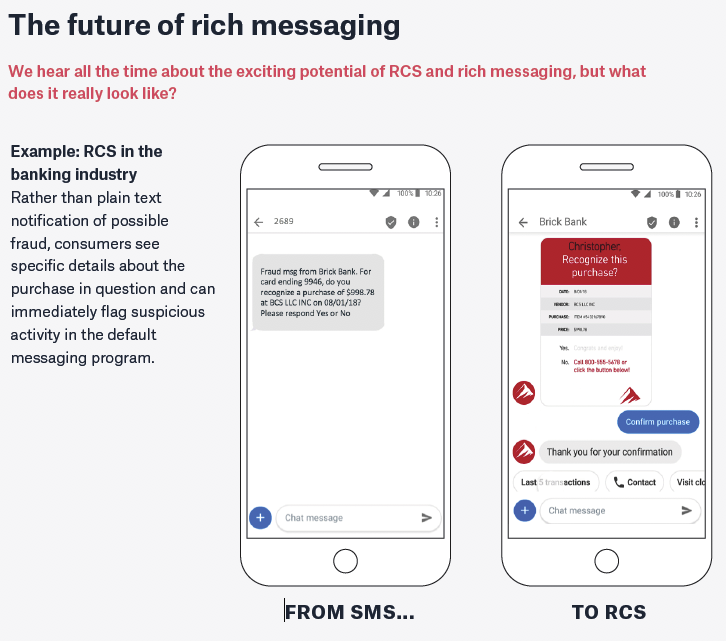
Among the changes we foresee in the next 2-3 years — to say nothing of the coming decade — is a greater push toward two-way, rich-media messaging. Before long, consumers will experience a much wider range of message types.
Just as “digital experiences” defined the last decade of customer engagement, “mobile experiences” will characterize the coming decade. At the heart of the mobile experience is the need to personalize each experience to the individual. The technology is in many ways advancing much more rapidly than business leaders can leverage it. The race is on to build out vibrant ecosystems that treat access to consumer data as a privilege, deliver clear value to the consumer and match needs to the individual.
Sinch's research highlights the following conclusions for businesses looking to meet the growing demands of consumers leading into 2020:
- Prioritize value and personalization
- Look for unmet needs
- Build trust
- Value consumer privacy
You can drive down into the details and data in our Mobile Consumer Engagement 2020 report here.
Want to learn more? Or just want to connect? Please feel free to reach out to me! I'd love to chat. Originally posted on LinkedIn by Aly Abji.



